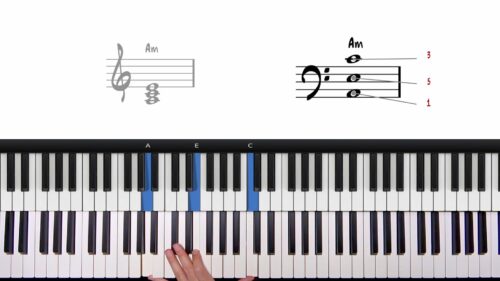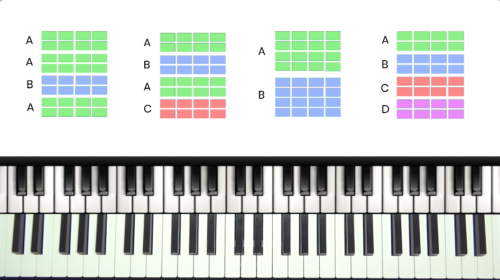"Body and Soul" A Section Variations
Welcome to the 2nd lesson in our exploration of the jazz standard "Body and Soul" for beginner jazz piano players. In this lesson, we’ll dive deeper into the A sections of the tune and explore ways to add variations to our playing during the repeating sections of the song.
Understanding the A Section Repetition
"Body and Soul" follows an AABA form, where the A section repeats 3 times. This is great news for memorisation, as learning the first 8 bars means that we already know 75% of the song!
The 2nd A section is almost identical to the 1st A Section, with the only difference being the addition of 2 chords — Em7 and A7 — that lead into the B section’s modulation to the key of D major.
Analysing the Chord Progressions
In the 1st A section, the final chord is Bb7, which serves as a dominant chord leading back to the Eb-7 chord at the start of the 2nd A section. In the 2nd A section, however, we use a ii-V progression (Em7 to A7) to prepare for the key change to D major in the B section.
Adding Variation to the A Section
To keep the repeated A sections interesting, we can consider adding variations in our playing. We can use techniques like rolling our left hand chords to create a bigger sound, adding turns and other decoration in the melody, or incorporating stride-style left-hand movements which works well for the slash chord of Eb-7 to Eb-7/Db.
These small changes can create a sense of development and anticipation as we move towards the B section of the tune.
Practice Tips
-
Learn The Form: By learning the form we can remember that the A section, or the 1st 8 bars, repeats 3 times in the tune.
-
Experiment with Variations: Try adding subtle variations like turns, rolled chords, and different left-hand movements to make the repeated A sections more engaging.
-
Identify 2-5-1 Progressions: Practice the Em7 to A7 to Dmaj7 progression to smoothly transition into the B section - we explore this further in the next lesson.
-
Numeric Harmony: Use the numeric approach to understand how the chords relate to the key of Db major and reinforce your understanding of the harmony of "Body & Soul".
- Visualise Voice Leading: Focus on the movement of the 7th to the 3rd in chord transitions to create smooth voice leading in your playing.







If I am correct (still learning!), at measures 9-10 the Gb7 to Fm7 is a tritone substitution. How did I “figure” this out? Gb7 is the IV7 of the key of Db, it is “secondary dominant”. But I asked, “what purpose does it have?” I noticed that the tritone of Gb is C. This is a tritone substitution. C7 resolves to F (falling fifth, dominant-tonic relation). Summary, Gb7 is a substitution for C7, and C7 tonicizes the key of F. I am not sure, though, if we really “live” in the key of F much, if at all. It may be incorrect to say this is a “modulation”. But I feel like my analysis may be correct, at least in the context of 2-3 chords. I am discovering harmonic analysis is most correct (and easier) the smaller the “sample” of music you take, and becomes fuzzier the more you zoom out.
Hi Jospeh,
Great question.
I would simply look at the Gb7 as the IV7 chord, instead of IVmaj7.
Diatonically-speaking, the IV chord would be Gbmaj7 in the key of Db Major, and notice that the next chord is F-7 which is the iii-7 chord in the key of Db Major.
By changing the IV chord from a major 7th to a dominant 7th, we create a strong resolution into the iii-7 chord.
Remember that dominant chords want to resolve either a 5th down, or a half step down. In this case the Gb7 creates a strong half step resolution to the iii-7 chord.
You can see the same concept in my lesson here on “The Most Beautiful Progression” – pianogroove.com/jazz-piano-lessons/beautiful-chord-progression/ – notice that the IV chord is dominant – Ab7 instead of Abmaj7 (in the key of Eb Major) and this is actually followed by a dominant III chord (G7#5#9).
We have a lot of freedom to change major and minor chords into dominant chords in progressions such as this one and it open up different possibilities for resolution. It also allows us to add more colours and textures such as chord alterations and UST voicings.
Please let me know if you have any further questions.
Talk soon,
Hayden